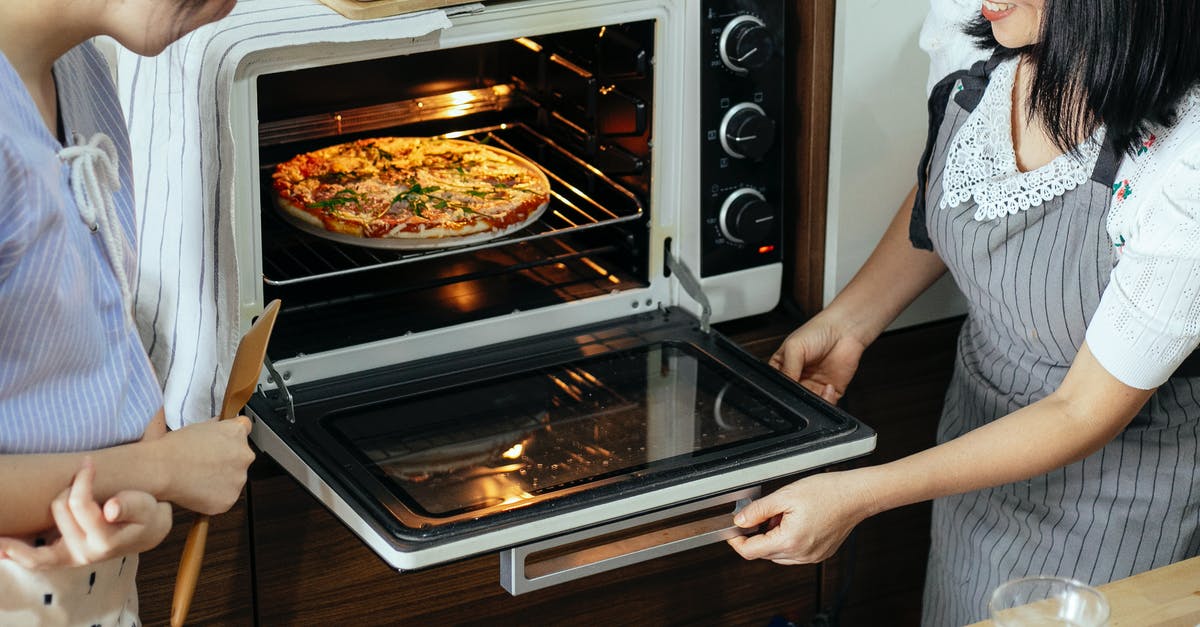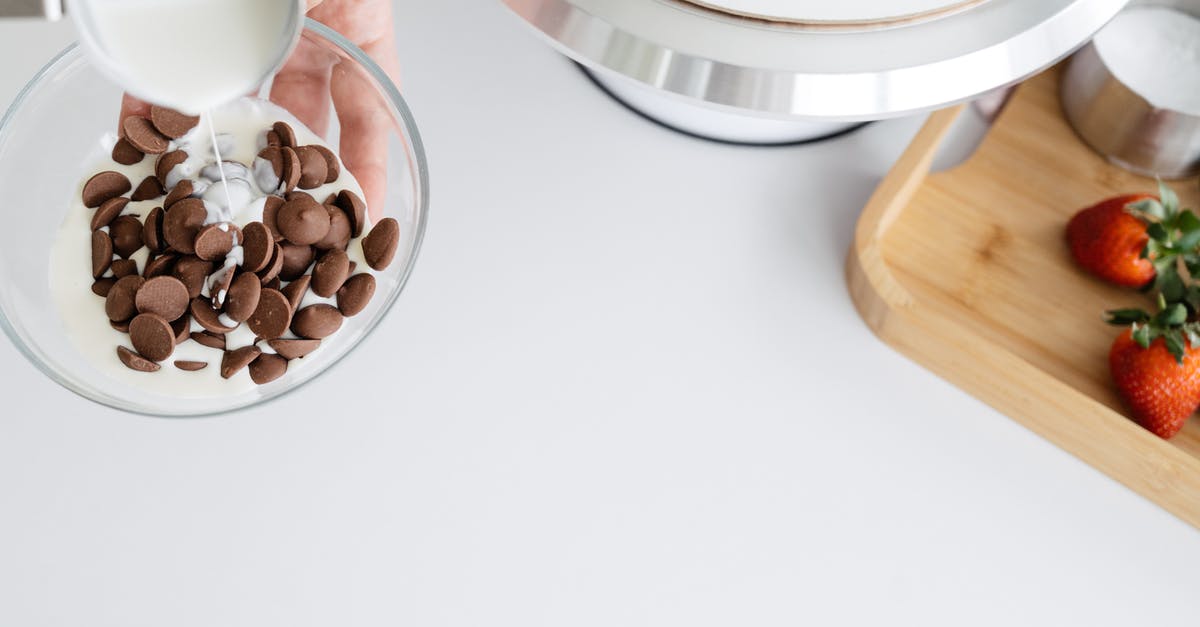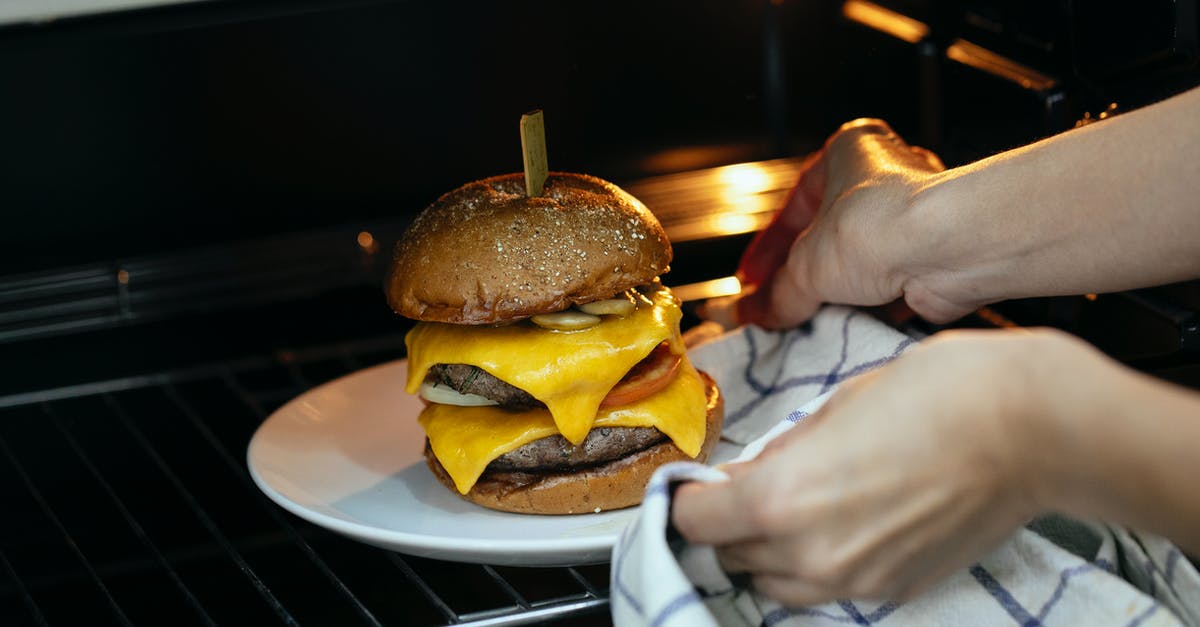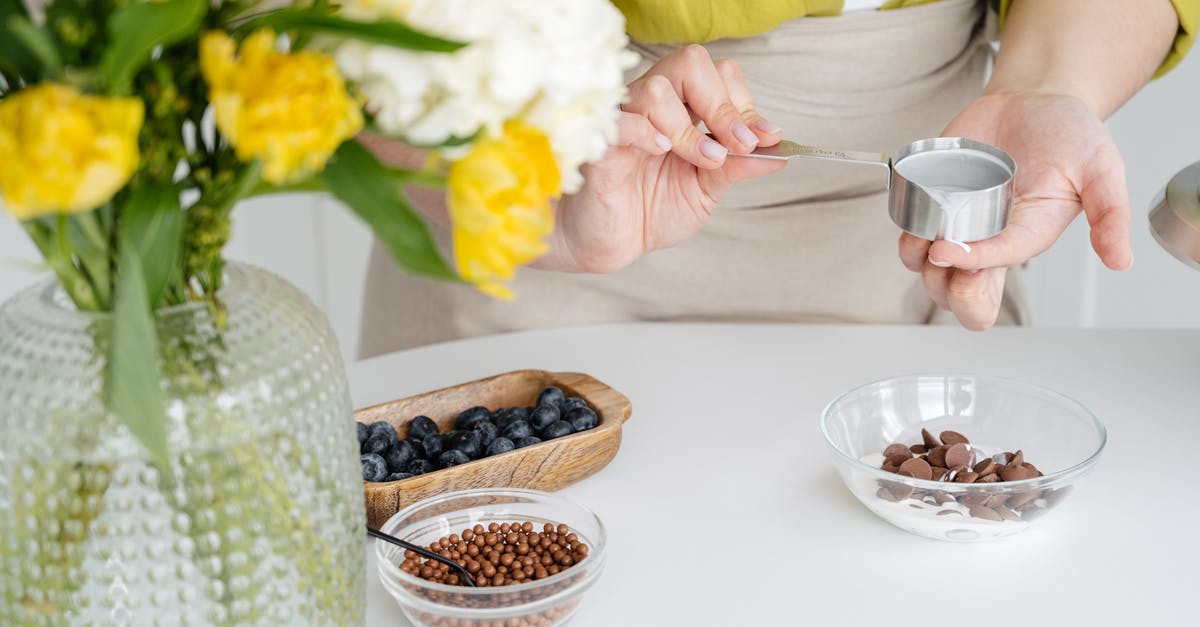Is it safe to put hot food in the fridge?

I heard that putting really warm food in the fridge right after cooking it is not the right thing to do. It might cause bacterial growth? Is this true?
Best Answer
This is a myth left over from the days of iceboxes. Go to any official food safety resource online, like the USDA or FDA, and you will find that they are all in agreement: it's perfectly safe to put hot food in your refrigerator. In fact, unless you are using some more direct cooling method, like putting your food in an ice bath, waiting to refrigerate your food is often a health hazard.
For example, see
FDA — Despite what some people believe, putting hot food in the refrigerator doesn't harm the appliance.
FDA — A lot of people think it will harm their refrigerator to put hot food inside—it's not true. It won't harm your refrigerator and it will keep your food—and you—safe*. (Page not found)
Washington State Department of Health — Fact: Hot food can be placed in the refrigerator.
Partnership for Food Safety Education — Fact: Hot foods can be placed directly in the refrigerator. (Page not found)
Alaska Food Safety and Sanitation Program — Myth #10 "I can't put hot food into the refrigerator. The food will spoil if I do." — The food will spoil if it is not quickly cooled! The leading cause of foodborne illness in the United States is improper cooling, such as leaving cooked foods at room temperature … (Page not found)
Florida Department of Health — Hot food can be placed directly in the refrigerator if you divide large quantities into small, shallow containers. (Page not found)
These are just a few links I found in the first couple pages of a search; there are obviously many more. IMPORTANT NOTE: Particular precautions should be taken for large quantities of food; see below for details. But there are three common objections: (1) it will "overwork" the fridge, (2) it will heat up other food in the fridge to unsafe temperatures and cause it to spoil, and (3) somehow, the uneven cooling of the hot food in the container will cause it to spoil. Let's take these each in turn.
"It will overwork the fridge" — False in most cases
Lots of people worry about putting a quart or two of hot food in their fridge, but they wouldn't think anything of filling their fridges with multiple gallons of room temperature drinks to chill them, even if it might require the same amount of energy to cool. Anything that is above the temperature of the fridge will require energy to cool.
Now if you plan on putting a very large amount of hot food into a small fridge all at the same time, it might strain the fridge. If you do it once in a while? Probably not an issue in a modern fridge, as long as it's not excessive. If you plan to do that on a regular basis, you should consider using ice baths or other cooling methods to pre-chill the food before putting it in the fridge.
It will cost more energy to cool hot foods in the fridge. If you are looking for the most energy-efficient method, it is probably to use a cold tap water bath, replacing the water a few times to bring down the temperature as fast as possible to room temperature. Then refrigerate. Chilling with ice water is safer and faster, but it's not the most energy efficient, if that's your concern.
Also, in most cases it probably makes sense to wait until the food actually gets into the "Danger Zone" (below 140°F or so) before refrigerating; there's little safety benefit in putting a boiling pot directly into the fridge. Unless you're monitoring the temperature of your cooling food, though, it still is safest to move it to the fridge as soon as you can.
"It will heat up other food in the fridge to unsafe temperatures and cause it to spoil" — False in almost all cases.
This is the real myth that comes from the icebox theory. In an old icebox, you just had a block of ice, and no air circulation. If you put something hot in there, the ice would melt, the food wouldn't even get cool, and everything else would warm up and spoil.
That just doesn't happen in a modern fridge, as can be found out on reputable food safety websites, such as mentioned above. I've actually tested it myself. I once put a gallon of very hot soup in the fridge just to see what happened. I checked the fridge every 30 minutes or so by measuring surface temperatures of other foods with an infrared thermometer. My fridge is generally around 35–36°F. There was one item which was almost touching the metal pot that maybe reached 44°F or 45°F for a short time—above ideal refrigeration temperatures, but hardly enough to cause a lot of spoilage. All other items in the fridge—even many on the same shelf—stayed within a few degrees of the refrigerator temperature, 40°F at the most.
And this wasn't in some fancy fridge: it was actually at least 10 years old and a rather cheap model. The air circulation is enough to keep most other foods cool, unless you're actually touching them to the hot container. The radiative heat coming off the hot container will raise stuff around it by a couple degrees for a couple hours, but in a fridge kept at a proper low temperature, this should not be an issue at all.
If you have a very old fridge that doesn't work properly, or some weird new fridge that is super energy-efficient and doesn't cool properly, you might have an issue. But for anyone with a normal modern fridge, this is not an issue.
EDIT: Another question was posed in response to my comment here, and I documented there a more detailed experiment I carried out by placing a gallon of boiling water directly into my home refrigerator (admittedly a newer model than in the last experiment). My results, in summary, were that even food items placed within a couple inches on the same shelf of the pot of boiling water were only heated by 3–4° for a few hours. Other items in the fridge (on other shelves, etc.) barely changed temperature, moving maybe a degree or two at most. These temperature fluctuations might be a minor concern around highly perishable foods like raw meats, but it is probably common sense to keep raw meat away from hot food and warm food in general. Other items in a well-functioning modern refrigerator are unlikely to be negatively affected. If you don't believe me, here's another documented similar experiment with a large hot cheesecake put directly into the fridge from the oven.
"The uneven cooling of the hot food in the container will cause it to spoil" — Certainly false, compared to room temperature cooling.
In fact, leaving your container out on the counter at room temperature has a much, much, much higher probability of causing faster spoilage. With some dishes, it is actually quite irresponsible. There's a common belief that cooked food is "sterile," and by leaving it out with the lid on, it won't get contaminated. But there are a lot of microbes that produce spores which can even survive boiling or near-boiling temperatures. Many of them are kept at bay by competing with other microbes during the initial cooking phase, but after cooking, all that's usually left are nasty spores.
Rice, for example, is commonly infected with Bacillus cereus, which forms spores that aren't destroyed during normal rice cooking. Leave a rice dish out on the counter for too long, and you'll start growing a lot of that stuff, which can produce persistent toxins that won't be destroyed during reheating. This sort of thing is actually the cause of a lot of food poisoning from eating things like leftover Chinese food: if the rice was cooked earlier and not held above 140°F, and then was allowed to sit in a take-out container for many hours, it could grow a lot of toxins. It's often more likely to get food poisoning from the leftover rice than from a lot of other dishes that might seem more "dangerous."
Rice and Bacillus cereus are just one example. You really want to get food down to refrigerator temperatures as quickly as possible after cooking. Don't just leave it on the counter.
If you have a large quantity of hot food, break it down into small containers, and then refrigerate. Not all stacked together though; let air circulate around them. Or put your pot into an ice bath or cold water bath. Stirring periodically in an ice bath will make it cool even faster.
It's true that in a large pot of chili or something, the temperature of the center of the food will go down much more slowly and potentially could allow bacterial growth compared to outer layers. That's the reason that large pots of food should be broken down into small containers. But note that leaving a pot of chili out on the counter will make this bacterial growth even worse than if it is refrigerated immediately.
Even if you don't do any of these things and leave all the hot food in one large pot, it's still a safer strategy to put it directly into the fridge rather than leave it out on the counter at room temperature.
Important Edit: For large quantities of hot food, I am NOT advocating the practice of placing a large container in the refrigerator. It may take WAY too long for the large pot to cool completely, and the food in the large container may be unsafe to eat. Either break it down into smaller containers or use an ice bath. However, it's still unlikely to harm the food in the fridge or the fridge itself unless it's in direct contact with the hot container. And it's still safer than leaving the food on the counter to cool.
Pictures about "Is it safe to put hot food in the fridge?"



Can you put hot food straight in the fridge?
The Bottom LineIt is OK to store hot foods in the fridge. You do not have to wait for the foods to cool before you put them away. In fact, it's better to store them right away, while they're still hot, than to forget them and leave them sitting at room temperature too long.Why should you never put hot food in a fridge?
Meher Rajput, Nutritionist at FITPASS explains, "Hot food should be brought down to room temperature-because if placed in the fridge(boiling hot) the salmonella bacteria can spoil the food very easily in the fridge.Should you let food cool before putting in fridge?
Harmful bacteria can grow in food that is not chilled down as quickly as possible. SAFETY POINT WHY? If you have cooked food that you will not serve immediately, chill it down as quickly as possible and then put it in the fridge. Harmful bacteria can grow in food that is left to chill slowly.What happens if you put something hot on the fridge?
Heat Wave. If it wasn't for energy efficiency concerns, there would really be nothing wrong with putting hot foods directly into most modern refrigerators. Doing so won't damage the appliance in any way, and it won't cause the other food inside to spoil.True or False: It isn't safe to put hot food directly into the refrigerator
More answers regarding is it safe to put hot food in the fridge?
Answer 2
I've always understood the problem to be that you're heating up the refrigerator, which may be unsafe for the other food in the fridge. For the food you're cooling, it's not a problem.
Answer 3
Two problems:
Hot or warm food will briefly warm up the air and therefore to some degree the food already in fridge, especially items immediately near it. Cycling temperatures does not help fresh food quality or life. Modern fan forced fridges may suffer this problem less.
It is very power inefficient to do this. Just let it cool on the bench until it reaches a cooler temperature and then place it in the refrigerator. Use any of the well-documented and appropriate techniques to cool food quickly and safely if it is going to longer than 2 hours to cool.
Answer 4
If you want to cool food down quickly, just use a cold Bain Marie; Put cold water in the sink (for instance), add some ice, then add the pot you are trying to cool down. Stir.
You can keep on adding more ice as needed.
Answer 5
One thing still hasn't been mentioned here, and I think it's one of the most important points:
If you need to cool a very large quantity of a very hot food - for example, a fresh pot of stock - then putting it straight into the refrigerator is akin to leaving the refrigerator door open for an extended period of time. It will cause the motor to run constantly and can actually burn it out.
Even if it doesn't burn it out, it puts a lot of strain on the mechanical parts and will almost certainly shorten the refrigerator's life span.
This is, or should, be an equal concern to food safety. For smaller food items, it's really a non-issue on both fronts.
Answer 6
Earlier in life, I had the personal experience of cooking up a large batch (2 catering pans) of chicken and pasta in a cream sauce for a party. Once it was done, I put it into the basement fridge to cool overnight and keep until the party. Turns out that the fridge took so long to cool it down that the cream sauce went bad by the late morning. Not just "a little off" but completely spoiled so that it needed to be thrown out and our basement smelled horribly for a week.
As said in earlier comments, a large quantity of hot food in a fridge can take hours to cool down and can certainly spoil as quickly as overnight. There just isn’t enough cool air circulating around a large batch of food to effectively cool it all the way through in a reasonable time.
In my particular case, and for any large batch of stir-able food, the right way to cool the dish would be to stir it with an ice paddle. In a pro kitchen, an ice paddle is a huge water filled stirrer that you keep frozen. When you have a large volume of hot food that needs to be cooled, you stir it with the ice paddle until the temperature comes down enough that it is safe to put the food in the fridge. All the melted water stays contained inside the paddle so the food cools down without being watered down.
I don’t have a real ice paddle, so when I need to cool food that can be stirred I substitute a “cooler insert” for the ice paddle. Well, cooler insert probably isn’t the real word for the thing, so let me describe it. It’s a blue hard plastic container about the size and shape of a book and filled with water. The intended use it to put them in a picnic cooler to keep your food cool without getting it wet. You keep it in the freezer so it’s frozen solid and ready to use as an ice pack or, in my case, a food cooling stirrer.
In a pinch, if you need to cool a tray of food or large pot of soup, you can seal up ice in a plastic bag. Carefully put the bag in your food and stir it frequently to distribute the heat through the dish. If you don’t stir, the food away from the ice won’t cool. The ice should melt inside the bag and the food should cool nicely. Once your food is cool enough, you can pluck out the bag.
Answer 7
Something I've found helpful when trying to cool off large quantities of soups or stews before refrigerating or freezing: pour into relatively large, flat containers, like roasting pans, to increase the surface area. Yes, it means more pans to wash, but it can reduce the cool-down time considerably. [If I'm going to be freezing the recipe I'll put the hot food into separate containers right away, as the smaller containers will also cool down more quickly than one big vat would.]
I've used ice baths in the past as well, but I like the suggestions to drop bagged or other containerized ice into the food directly to help cool it down; I'll vote that up, and will definitely try it in future!
Answer 8
I don't think it's a good idea to put piping hot food directly into the fridge. The danger zone for bacterial growth in food is between 41 and 135 degrees F. Putting very hot food in the fridge may bring foods that are close-by into the danger zone as others have said.
Food has to go through the temperature danger zone (41 °F–135 °F) during the cooling process. Bacteria grow rapidly in the temperature danger zone, so the times that food can be at that temperature has to be minimized to limit bacterial growth. Important cooling temperatures and times include the following:
- Hot food must be cooled from 135 °F–70 °F within 2 hours.
- Hot food must be cooled from 70 °F–41 °F in an additional 4 hours.
- Foods at room temperature (70 °F) must be cooled to 41 °F within 4 hours.
This PDF has some good resources about cooling food and some ideas for cooling it quickly.
Answer 9
I have repaired my fridge freezer twice and the cause of the breakdown has been the same each time; condensation rises and becomes trapped in the thermostat area (poor design maybe?) Then the end of the fridge thermostat (bare metal) rusts. Eventually the fridge breaks down and it has been the rusty thermostat each time, caused by moisture from condensation. I never put hot food in the fridge, maybe slightly warm though. If this causes such a problem, I hate to think of the damage steaming pots of food could do!
Sources: Stack Exchange - This article follows the attribution requirements of Stack Exchange and is licensed under CC BY-SA 3.0.
Images: SHVETS production, SHVETS production, Katerina Holmes, Katerina Holmes
